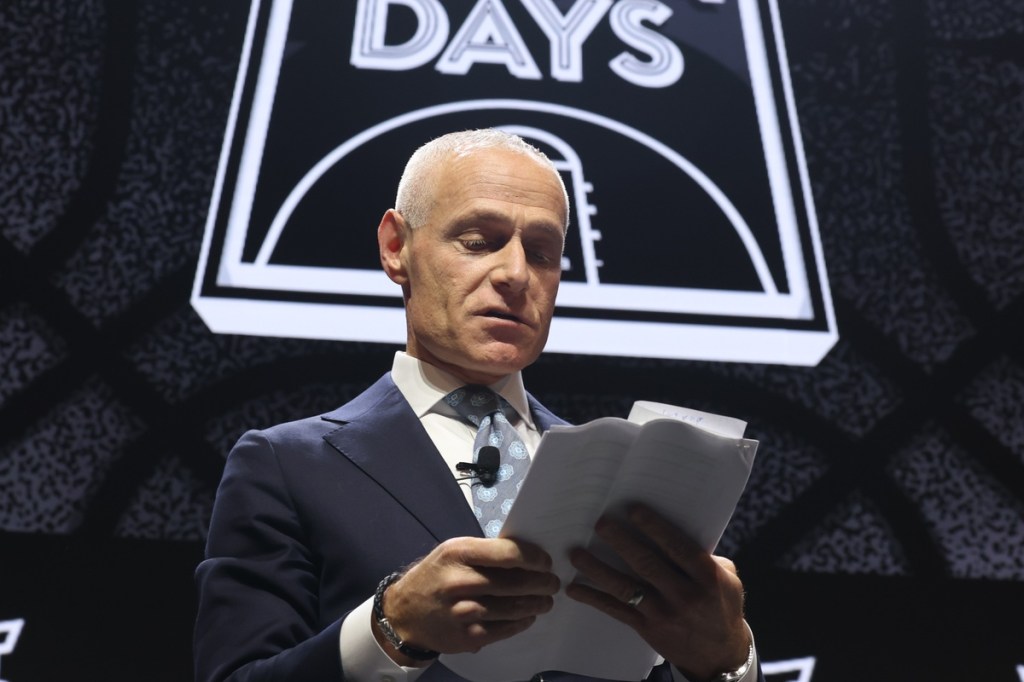Six months after buying The Athletic in a $550 million all-cash deal, The New York Times Co. is launching a high-level shakeup of Athletic management.
The changes include redefined roles for co-founders Alex Mather and Adam Hansmann — who launched the subscription sports news website in 2016. Each will no longer have the co-president titles they held in the months since the January acquisition, according to two internal memos obtained by Front Office Sports.
The site also launched a search for an executive editor, a new position to oversee The Athletic’s worldwide global operations.
Former Times executive turned Athletic Publisher David Perpich explained the strategy in a memo.
“Our goal is to create a sustainable structure in which senior leaders have clear areas of responsibility in driving the company’s success, as well as supporting their talented teams,” wrote Perpich. “Refining the way we lead will also help us drive more effectively toward a shared mission, ambition, and culture.
The changes include:
- Co-founder Hansmann will continue to serve as COO, but the memo states his oversight over legal, finance, human resources, and communications will now be “to ensure The Athletic, as a whole, has a cohesive strategy, set of priorities, and processes that lead to a well-run company.” Hansmann was the president of The Athletic before the acquisition.
- Co-founder Mather, who had been the site’s CEO before the sale, will become chief product officer. In the months after the purchase, Mather had worked as general manager since the acquisition.
- Charlotte Winthrop, who has been the senior VP of marketing, was promoted to chief growth officer.
- Aki Mandhar’s general manager role, in which she oversaw partnerships for The Athletic’s U.K. operations, was broadened to include all of the site’s international efforts.
Meanwhile, the incoming executive editor will oversee multiple divisions of the six-year-old site, including: the North American newsroom; the United Kingdom newsroom; talent development, audience, audio production, social media; and programming.
The Athletic’s current editorial leadership will report to the Executive Editor, including Paul Fichtenbaum, the U.S.-based Chief Content Officer, and Alex Kay-Jelski, Editor-in-Chief of The Athletic in the United Kingdom and Europe.
“The executive editor will work with Paul, AKJ, and the existing editorial leadership to build on the immense success established by the broad base of journalistic talent that’s been cultivated within The Athletic since its founding,” wrote Perpich.
“Together, they will focus on creating a unified vision of our coverage, growing our inclusive culture, and nurturing and championing capabilities that enable the team to produce great journalism that meets the needs of a growing audience of sports fans. Paul and AKJ will continue to lead their respective teams and represent the editorial team with executive leaders in shaping the company’s strategy. I will post the role in the coming weeks. Paul and AKJ will partner with me and Adam, as well as others, in finding the right person for this role.”
One name that’s been cited as a possible target is Kevin Merida, Executive Editor of the Los Angeles Times. Merida has had a long sports career as an editor and executive at ESPN, The Undefeated (now called Andscape), and The Washington Post.
While Merida is thought to be a top candidate, two sources told FOS that it’s very unlikely he’d leave the Los Angeles Times.
The subscription-based sports site employs about 400 sports journalists and 600 total employees. The site generated $65 million in revenue last year with operating losses of $55 million.
At the time of the acquisition, senior Times management said The Athletic’s 1.2 million subscribers would help it reach its goal of 10 million paying subscribers.
A few reporters for The Athletic had announced on Twitter they were leaving the company. A source with knowledge of the situation told FOS that the movement was mostly attributed to talent finding new opportunities elsewhere and shouldn’t be construed as positions being eliminated as part of cost-cutting moves.

















